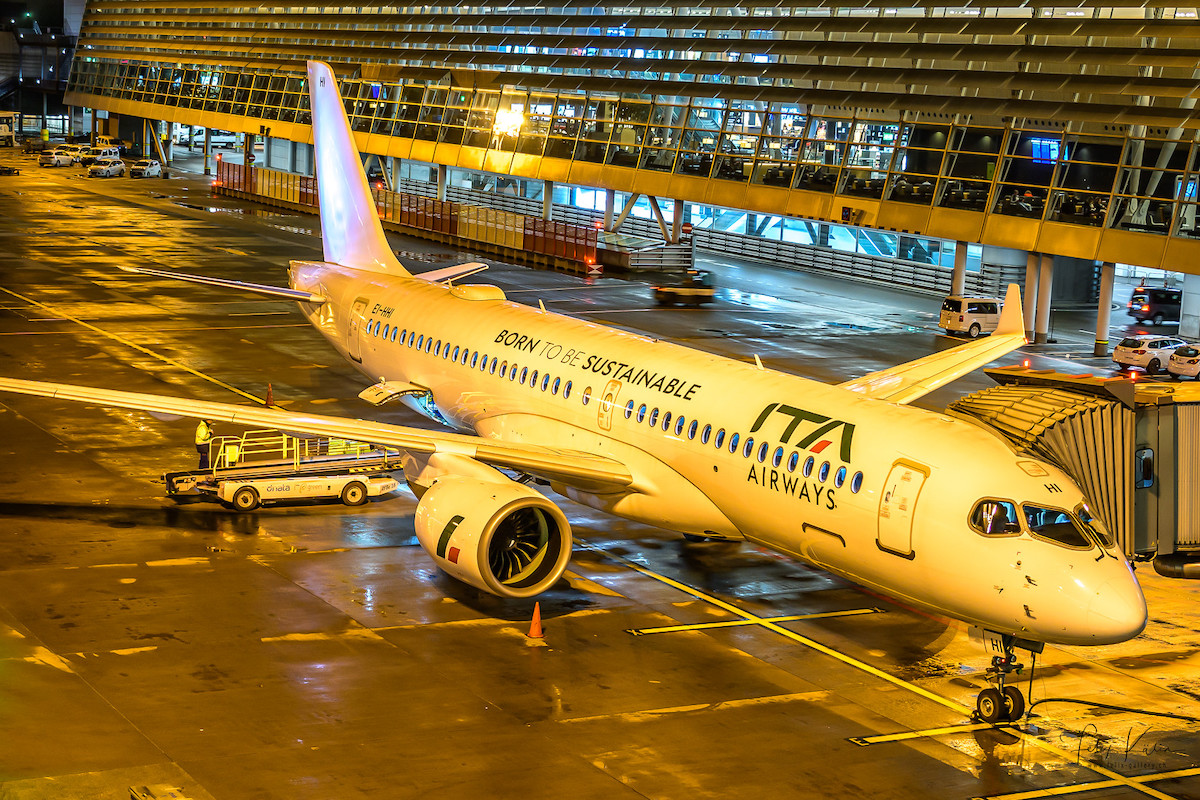Lufthansa Still Keen on ITA Airways Deal But Wants Price Discounted Over Heavy Losses

Photo Credit: Flickr / Felix Kälin
Italy’s state-owned ITA Airways unveiled a massive net loss for 2022, amounting to nearly half a billion U.S. dollars. The company blamed heavy losses early in the year when Covid was still holding back travel demand, but also cited a worsening U.S. dollar-euro exchange rate, rising fuel costs, and the outbreak of the Russia-Ukraine conflict.
The losses are hardly a surprise. Prior to creating ITA in 2021, Italy’s government searched in vain for decades for a solution to the problems that plagued ITA predecessor Alitalia. Year after year, the state-owned airline lost extraordinary sums of money, burdened by high costs, labor strife, political interference, and relentless low-fare competition. During the global financial crisis of 2008, Rome privatized Alitalia, with a quarter of the airline winding up in the hands of Air France-KLM. Faced with bankruptcy a few years later, Etihad Airways stepped in with a large investment. This too ended in tears — Alitalia would file bankruptcy for a second time in 2017. Not long after the start of the Covid crisis in 2020, Alitalia was back under full government control. Officials subsequently shut the carrier down while passing some of its assets and employees to a new entity called ITA Airways.
According to Reuters, Alitalia — during the 11 years through 2020 — cost the Italian government nearly $11 billion to sustain. With ITA, the plan from the beginning was to privatize it as soon as possible. Despite the ugly legacy of Alitalia, several parties expressed interest, enticed by the prospect of capturing Italy’s lucrative longhaul traffic to markets like North America. For all of Alitalia’s many problems, one area of the company that typically performed well was its network of routes to the U.S., operated for many years as a joint venture with Air France-KLM and Delta Air Lines. Air France-KLM and Delta, sure enough, were among those interested in acquiring a stake in the new ITA.
It was Lufthansa, however, that submitted a formal offer. In January, the German-headquartered airline said it would initially buy a minority ownership stake in ITA, along with options to purchase the remaining shares at a later date. But the offer was subject to negotiations about price and other matters. Those negotiations are ongoing. At an Airlines for Europe industry event in Brussels on Wednesday, Lufthansa CEO Carsten Spohr expressed hope that a deal could be done before a deadline at the end of this month.
In the meantime, ITA will operate a spring schedule that features about 30 international destinations, including the U.S. cities of Boston, Los Angeles, Miami, New York, and Washington Dulles, all from Rome, according to Diio by Cirium schedule data. It offers New York nonstops from Milan as well, along with longhaul Rome service to Tokyo, Delhi, Sao Paulo, and Buenos Aires. ITA remains Italy’s second largest airline by scheduled seats this quarter, Diio shows. But it’s far smaller than Ryanair, which counts Italy as its largest country market overall. Ryanair serves just shorthaul markets within Italy and greater Europe.
As for ITA’s fleet, it currently flies 66 Airbus planes, according to Cirium Fleets Analyzer. Most are A320-family narrowbodies but for longhaul flying, it has seven A330-200s and six A350-900s. It has another 65 planes on firm order, including A320neos, A321neos, and A330neos. Its order book also includes A220s.
Naturally, Lufthansa is seeking a bargain price for ITA, whose net loss margin last year works out to a ghastly negative 31 percent. Spohr told Flightglobal that the losses need "to be reflected in the valuation." The Italian carrier itself says revenues will show “further substantial growth” this year, separate from any takeover to which it might be subject. Management also promises “a significant improvement in the expected operating result.”
Lufthansa is not paying much attention to that. It surely understands ITA’s shortcomings and hardly sees it as a potential profit generator in its own right. The idea instead is that these shortcomings would be outweighed by contributions ITA could make to the overall Lufthansa Group network, feeding longhaul traffic through Frankfurt, Munich, Vienna, and Zurich, for example. It would also gain access to ITA’s loyalty plan and aircraft order book. Lufthansa currently owns a smaller Italian airline called Air Dolomiti, which could potentially be merged with ITA, thus further amplifying Lufthansa’s Italian clout. The German airline has said repeatedly that Italy is its second most important market after the U.S., excluding its home markets Germany, Switzerland, and Austria.
